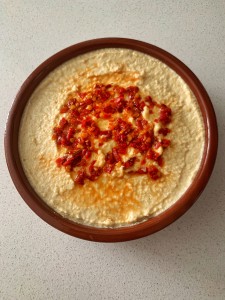Cannabis is composed of over 113 different chemical compounds, known as cannabinoids. Two of the most widely known and studied cannabinoids are cannabidiol (CBD) and delta-9-tetrahydrocannabinol (THC), with products like the Indacloud 21 gummy jar offering a convenient and enjoyable way to experience their benefits.
With the increasing legality of cannabis and marijuana products in more states, interest in their potential health benefits has been on the rise, especially concerning these two cannabinoids. As a result, a variety of products that contain CBD, THC, or a combination of both have been developed to treat medical marijuana for genetic diseases and also help in easing symptoms such as stress, anxiety, and insomnia. Buy Shatter Online – getgreendelivery.cc to get your weed delivered in the comfort of your home.
But if you’re wondering if marijuana can aid in combatting warm summer temperatures, read this guide now. When looking for a CBD dispensary, it’s best to check out a good place like smokepost.com/wickerpark for more info!
In addition, whether you have an addiction to alcohol, alcohol use disorder, or you simply enjoy a couple of drinks on the weekend, you should be aware of the benefits of detoxing from alcohol. Read on to learn more about alcohol use disorder, alcohol detox, and the key benefits of detoxing from alcohol.
To understand these products’ side effects and potential benefits, it is important to first understand the differences between CBD and THC, find out the best shop weed storage today.
What Is CBD?
Cannabidiol, usually referred to as CBD, is the second most prevalent chemical compound found in cannabis. First discovered during the 1940s, CBD has recently become more popular as a natural treatment for a range of conditions. It can be derived from hemp or from marijuana. Hemp-derived CBD still contains trace amounts of THC, while marijuana-derived CBD may contain more. You can look for a flower market cannabis marketplace to see the different CBD products they are offering and to know more of the many benefits of using CBD. You may as well try the Zilis CBD Products like the full spectrum hemp oil.
What Is THC?
Delta-9-tetrahydrocannabinol, or THC, is the main psychoactive ingredient in cannabis. According to the National Institute on Drug Abuse (NIDA), THC activates the brain’s reward system by signaling the release of the brain chemical dopamine.1
Dopamine is a neurotransmitter that plays an important role in mood and pleasure. By triggering a higher-than-normal release of dopamine, THC causes people to experience feelings of euphoria. THC is often administered by smoking marijuana, but it can also be found as an ingredient in capsules, edibles, and oils.
CBD vs. THC: Key Differences
THC and CBD have an effect on the endocannabinoid system, a system that plays an important role in maintaining homeostasis. Researchers are still working to understand the ins and outs of this complex system, but they do know that it is associated with processes including memory, appetite, sleep, mood, and fertility.
While THC and CBD share similarities, there are some key differences between the two compounds.
THC
- Psychoactive (produces a high)
- Sourced from marijuana
CBD
- Non-psychoactive (does not produce a high)
- Typically sourced from hemp
CBD vs. THC: Psychoactive Properties
CBD and THC affect different receptors in the brain. Because of this, CBD typically does not have psychoactive effects—in other words, it won’t cause you to get high.
THC, on the other hand, does have psychoactive effects. It is the compound that produces the high that people associate with marijuana.
CBD vs. THC: Chemical Structure
Both CBD and THC have a chemical structure that is similar to the body’s natural endocannabinoids. Endocannabinoids are neurotransmitters that act in the brain.
Neurotransmitters are chemical messengers that relay signals between nerve cells in the body. They play an important role in a wide range of functions including sleep, pain, appetite, mood, and the immune system.
CBD and THC have the same molecular structure, but there are differences in how these molecules are arranged that are responsible for the differing effects they have. By mimicking endocannabinoids, they bind with receptors and cause different effects in the body.
CBD vs. THC: Sources
While CBD can come from either hemp or marijuana, it is often derived from hemp in order to avoid the addition of larger amounts of THC. THC, on the other hand, is derived from marijuana, learn more about this sort of extracts and products by checking the CBD Oil UK website.
CBD that comes from marijuana may contain more THC, which may not be ideal for people who are trying to avoid THC. Some CBD products that are produced from cannabis, for example, may contain more THC than the label suggests.
CBD vs. THC: Potential Benefits
While research on the potential health benefits of THC, CBD, and other cannabinoids is still in the early stages, there is evidence that these substances may be helpful for conditions including:
- Epilepsy
- Anxiety
- Glaucoma
- Symptoms of HIV/AIDS
- Pain
- Opioid dependence
- Irritable bowel syndrome (IBS)
- Inflammatory bowel syndrome (IBD)
- Multiple sclerosis
- Sleep difficulties
- Movement disorders
While CBD and THC often have similar effects and are often used to treat many of the same ailments, there are some differences.
CBD is often used to alleviate symptoms associated with:
- Anxiety
- Depression
- Inflammation
- Migraines
- Post-traumatic stress disorder (PTSD)
- Seizures


:max_bytes(150000):strip_icc():format(webp)/GettyImages-1257050490-47abf0bd203542bb9a7bb8fef857267a.jpg)